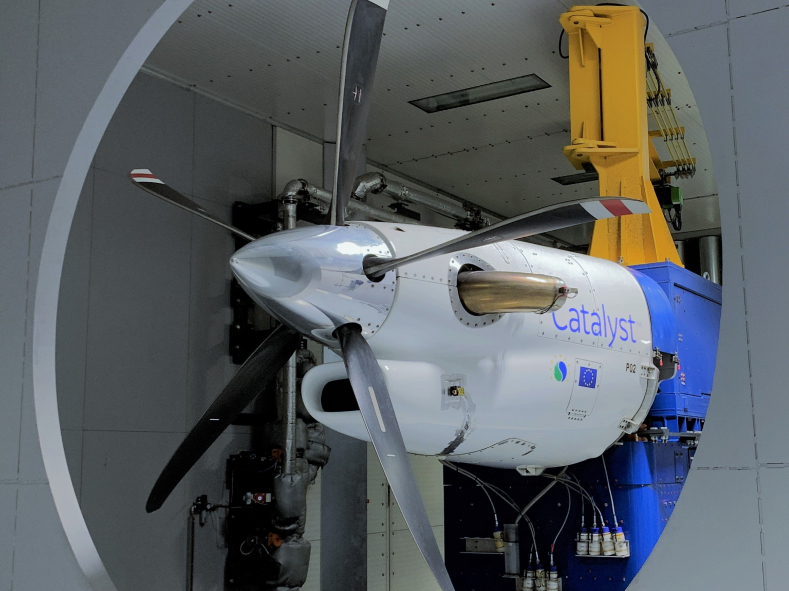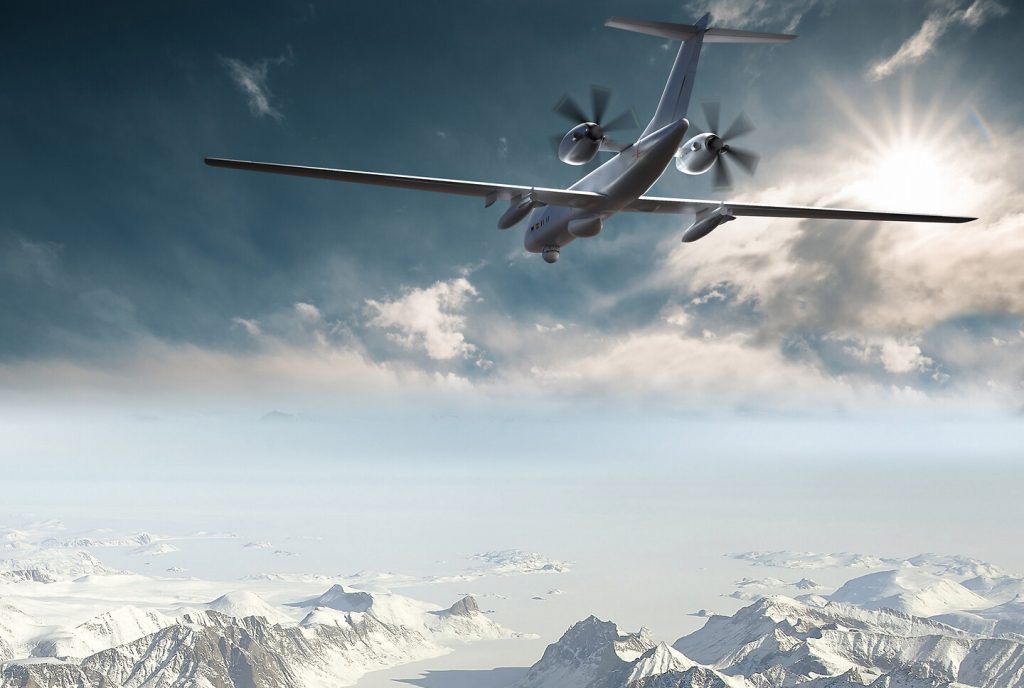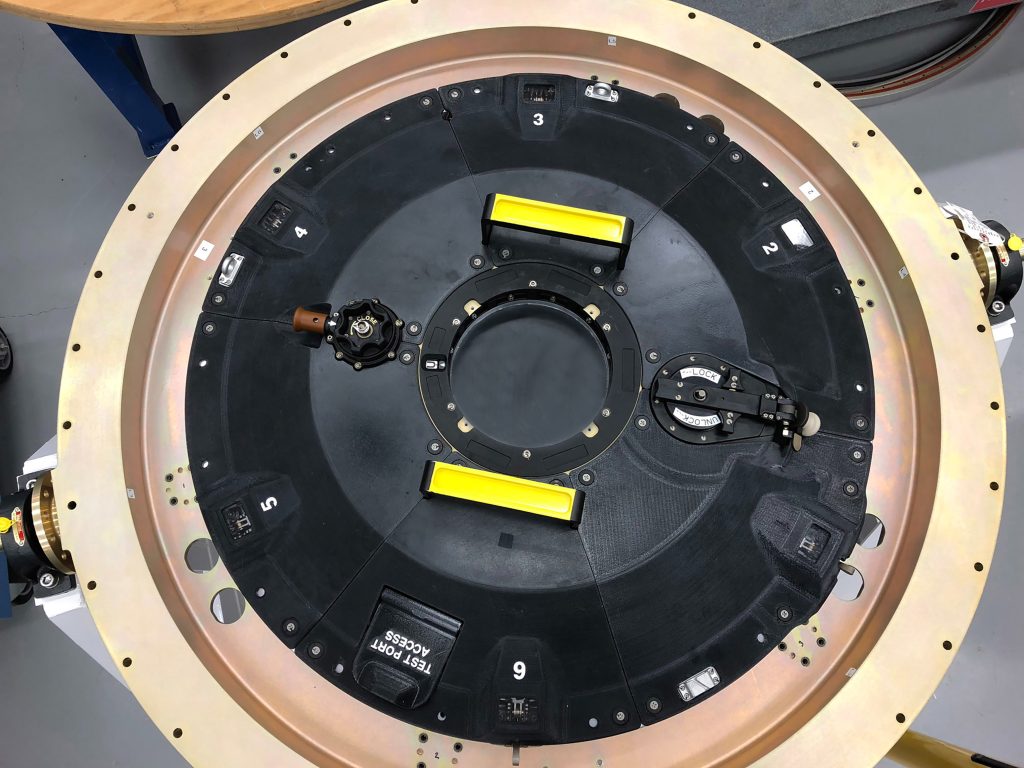3D printer manufacturer Stratasys and GE Aviation business Avio Aero have unveiled initiatives that could see their respective technologies deployed within brand new aerospace applications.
In Stratasys’ case, having released the qualification data behind the use of Antero 840CN03 polymer on the Orion spacecraft, it hopes to foster the development of a model for utilizing the material in similar scenarios. Avio Aero, on the other hand, has seen its partially-3D printed Catalyst engine selected by Airbus to propel its ‘Eurodrone,’ a UAV designed to carry out European surveillance missions.
“The Catalyst was identified as the best solution based on superior performance, lower developmental risk, better in-service economics and growth potential,” explains Jean-Brice Dumont, Head of Military Aircraft at Airbus. “In line with customer requirements, Catalyst will offer a truly European solution and will thus contribute to the overall role of Eurodrone as an enabler of strategic autonomy.”
“This selection is a decisive step forward and will ensure that the Eurodrone program can proceed on time, on cost and in line with the specifications laid out by our customers.”

Avio Aero’s Catalyst engine
According to GE Aviation, Catalyst is “the first new turboprop designed from scratch in more than 30 years,” a turboprop being an engine that drives an aircraft propeller. Said to feature full authority digital engine control or ‘FADEC’ technology, the propulsion system is designed to make commercial airplanes easier to fly for pilots, by operating based on inputs from a single lever instead of four.
“FADEC knows the conditions my plane is in, and it then optimizes the pitch of the propeller and the fuel flow around those conditions,” Paul Corkery, GE Aviation’s GM of Turboprop Engines told Mobility Outlook. “The pilot will no longer need to consult a chart to optimize the flight around the correct parameters with four separate levers. It will all be digitized. The pilot will just have a single lever. It will be like flying a jet.”
Up to 30% of the Catalyst’s components are believed to be 3D printed, with the technology primarily being used for part lightweighting and consolidation purposes. Citing twelve printed components of the engine as a particularly prominent example of this, GE says they would usually have to be produced as around 800 pieces, thus driving this figure down has improved its weight and fuel efficiency.
Leveraging 3D printing, the firm has also managed to bring the turboprop’s R&D time down dramatically, from up to ten years down to just two. Much of this work has taken place at Avio Aero’s Brindisi facility, which houses several DMLM machines powered by technology inherited by GE as part of its acquisition of Concept Laser back in late-2016, as well as GE Aviation’s sprawling Additive Technology Center.
Since delivering its first flightworthy engine to Textron Aviation in 2020, Avio Aero has seen the Catalyst rack up more than 2,600 hours of on-ground test running, and following its first successful test flight from Berlin Airport in September last year, the turboprop has now been selected by Airbus to power its Eurodrone UAV.

Propelling the Eurodrone UAV
Currently being built by Airbus alongside Leonardo and Dassault Aviation, the Eurodrone is set to be the first UAV designed for flight in non-segregated airspace, in that once finished, it’s expected to be deployed on Intelligence, Surveillance and Reconnaissance (ISR) missions across international borders and the continent.
Set to measure 16 meters in length and feature a 26-meter wingspan, the vehicle itself will be constructed via Airbus’ Digital Design, Manufacturing and Service (DDMS) system. As such, it’s anticipated that the UAV’s parts will benefit from enhanced logistical support that yields lead time and cost reductions, as well as quality improvements over those produced using traditional technologies.
Now that Airbus has contracted Avio Aero as part of a multi-year deal to help build and maintain 120 Catalyst engines, the Eurodrone is also set to benefit from the supply and assembly support of both the latter’s European facilities, and those of GE, based in Italy, Germany, the Czech Republic and Poland moving forwards.
“We are honored to be chosen by Airbus to power the Eurodrone,” adds Riccardo Procacci, CEO and GM of Avio Aero. “This is a huge milestone for the European aviation industry, enabling the growth of European capabilities and sovereignty, and of course, for all our Catalyst team. We’ve invested in the people, resources and infrastructure to begin executing on the program immediately, and our teams across Europe are ready to get to work.”

Stratasys’ aerospace data initiative
Elsewhere, in a similarly aerospace innovation-focused initiative, Stratasys has also announced that it’s publishing the baseline qualification data behind a hatch cover it worked with Lockheed Martin and the Metropolitan State University of Denver (MSU Denver) to produce for the Orion spacecraft.
During the first phase of the project, Stratasys Direct and Lockheed Martin created the data set by 3D printing over 280 samples in Antero 840CN03 on Fortus F900 machines. Once printed, these test specimens underwent tensile strength testing, in which the high quality of Stratasys’ material is said to have been verified, while the parts themselves demonstrated ‘consistent mechanical properties.’
Following the program’s initial success, its team now aims to assess further properties of Antero 840CN03 that could be key to its application in ‘other part types and environments.’ For MSU Denver, the initiative also holds potential as a way of helping provide training to the future manufacturing workforce, as making such qualification data available, allows students to better understand its potential.
“These types of research and development collaborations with leading companies like Stratasys and Lockheed Martin enable our students to be well prepared to help their future aerospace employers with adopting the latest technology,” says Mark Yoss, Director of the Advanced Manufacturing Sciences Institute at MSU Denver. “By publishing this material qualification data, we can help move the aerospace industry forward by establishing more standards in additive manufacturing.”
To stay up to date with the latest 3D printing news, don’t forget to subscribe to the 3D Printing Industry newsletter or follow us on Twitter or liking our page on Facebook.
For a deeper dive into additive manufacturing, you can now subscribe to our Youtube channel, featuring discussion, debriefs, and shots of 3D printing in-action.
Are you looking for a job in the additive manufacturing industry? Visit 3D Printing Jobs for a selection of roles in the industry.
Featured image shows Avio Aero’s partially-3D printed Catalyst engine. Photo via Avio Aero.



